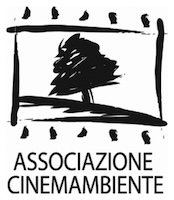La tragedia di un uomo ridicolo
Directed by
Dairy farming entrepreneur Primo Spaggiari finds himself facing bankruptcy and the disappearance of his son, who has been kidnapped for ransom. The kidnappers require a billion lira in order to free the son. When the son is said to have died, the entrepreneur puts up a fraudulent plan to save his dairy farm. Set in the Padan lowlands, this film is full of ambiguity and different tunes. With no gaps Bertolucci adds injections of irony and humour in the dramatic plot, producing a provisional work. Tognazzi in the role of the provincial entrepreneur gives a sharp and disturbing portrayal of Italian mediocrity.
In-depth analysis
About the Movie Tragedy of a Ridiculous Man
Cinema flows with river by Sergio Toffetti
When was neorealism born? This question has been “racking the brains” of every history of cinema, which at the best of times finish up sketching family trees branching off in different directions; just like "post-resistance" historiography which, with more a political than an extreme aesthetical strictness, refused en masse all the films produced during fascism filing them as mere expressions of the regime sparing, over all, the "Four famous Fathers of neorealism”. I bambini ci guardano by Vittorio De Sica, Quattro passi tra le nuvole by Alessandro Blasetti, Uomini sul fondo by Francesco De Robertis in collaboration with Roberto Rossellini and Ossessione by Luchino Visconti. In more recent years the family pertinences have extended to silent movies and have reached out so far as to gather a multitude of distant relatives (including Mario Camerini, Aldo Fabrizi's dialect cinema, and even Poggioli, Soldati and Castellani's excessive refinements sometimes re-read in an anti-regime myth key). In short, just like any other artistic movement preserving its vitality, neorealism doesn't make an exception and inflates and deflates its boundaries according to the paradigms of current mainstream criticism (besides a film-making tip suggests that the problem always lies in the choice of the viewpoint), as if it continued breathing keeping pace with us.
Our retrospective, an explorative journey interweaving the events of Italian cinema with the river Po's course, shifts the question not so much as to "when" was neorealism born but rather "where" was it born. And geography seems to suggest a shortcut to unravelling complexities of history and answering that neorealism was born right on the river Po.
"A film starring the Po is what we want. Where not folklore, nothing but a hotchpotch of exterior and decorative elements, but rather the spirit, by this term meaning a blend of moral and psychological elements, arouses interest. In which commercial needs succumb to intelligence."
Michelangelo Antonioni wrote this in an article in the magazine "Cinema" which had been significantly entitled "For a film on the Po river”. It was a clear-cut declaration of poetics, almost a written prologue to that ideal visual cartography which officially began four years later with Gente del Po – his first documentary – which will induce Antonioni to delve into the river Po all along its course, from Turin to Ravenna: from the Pavese inspired Le Amiche (1955), through Grido (1957) to Deserto rosso (1964). Antonioni's article breaks into the "new landscape” debate announcing the renewal of Italian cinema on the columns of a sector magazine time ahead, in the early 40s, prompting Giuseppe De Santis' to write: "How could man be possibly understood and interpreted if he is isolated from his daily context, be it the walls of his house, the streets of the city or even his fearful advancing, his blending in the surrounding nature which impresses so much power on him to the point of moulding him in its image and likeness." (Il paesaggio italiano, "Cinema”, April 1941). "Landscape”, continues De Santis, "is the element with the richest immediacy and communication force to the viewer's eyes who, first of all, wants to see”. De Santis and Mario Alicata's analysis – chiefly inspired by the Malavoglia's landscape, which until La Terra Trema, will be considered the "first choice subject of the "Cinema" [1] group – are meant to incarnate a series of films of those very Padan lowland landscapes transformed by Luchino Visconti in his debut film Ossessione (1943), in a land of desolated longing beauty, a photographic map of social and existential disquietude which picks the crust of the regime's social conformism.
Philology reasons suspended and captivated from the very first photogram by Ossessione's emotional strand, we immediately become aware that not only does Visconti's debut film kick off neorealism, but it also marks the entry of italian cinema into modern age, thanks to the research of a concrete landscape opposing the neutral background of regime films. That same concrete landscape is found in The Postman Always Rings Twice which is re-read nodding at the merging between the naturalism of Jean Renoir and Marcel Carné (whose sets staged Visconti's first steps) with James Cain's noir novel-style atmospheres. Released at the same time as Matarazzo's II birichino di papà, Lattuada's Giacomo l'idealista and Rossellini's L'uomo dalla croce, Ossessione opens a sudden new outlook onto a different world: the canals, the mists, the blazing sun, the open air dance floors, the stripes of tarmac running alongside the banks, bicycles, lorries and again love-deprived eroticism, sweating men in their cotton vests, women in curve-lining petticoats, longing looks, love and covetousness-driven crimes, a concealed reference to the Spanish war and even a scandalous homosexual relationship, so much so that it was censured also by post-war leftwing critics who ignored it altogether [2].
Also Roberto Rossellini's "journey through Italy" in Paisà ends on the Po engraving in our eyes and soul the images of the partisans carried away by the current with the sign "banditen" wrapped around their necks. Between 1942 and 1947 those same river banks are overlooked by Antonioni, Visconti, Rossellini, and the De Santis of Caccia Tragica (1946) almost covering the whole range of authorial positions which give the definition to "new cinema”. Thenceforth the Po Valley will star as the privileged scenery of fascist and resistance storylines, featuring both almost live shooting of the events and post event reflection-based films such as Gli sbandati (1955) by Francesco Maselli, La lunga notte del '43 (1960) by Florestano Vancini, Processo di Verona (1962) by Carlo Lizzani, Terrorista (1963) by Gianfranco De Bosio, Giardino dei Finzi Contini by Vittorio De Sica, Sette fratelli Cervi by Gianni Puccini (1968), L'Agnese va a morire (1976) by Giuliano Montaldo.
You cannot blame Jean Renoir for seeing cinema's physical mould in the stream of the river. The river, a liquid carousel of water reflecting life whilst fleeting away. Almost a metaphor of cinema. From its origins, "film" a thin coating revolving in the camera in the attempt of seizing reflexes of reality and which can only regain its shape after being immersed in a chemical solution and then finally flow into the images projected on a screen, after having whirled and twirled its way through the projector's workings. Since its start Italian cinema, in particular, has accompanied the Po in its course from source to mouth doubling its flux with a parallel stream of images as if in a two-party mirror game played by fiction and reality.
The lowlands, the rice fields, Ferrara, the Delta and Torino, the latter having been transformed into a "Hollywood on the Po" by the rising cinema industry at the beginning of 20th century, are the backdrop of our recent history's seasons: the peasant struggles, wars, Fascism, Resistance, the economic boom, each event recalling to mind just as many film titles, which marked Italian's history of cinema. Furthermore those landscapes write the chronicles of disappearing traditions and crafts. Not to mention the atmospheres. The misty autumns, memories of past tastes which yet seem to be only yesterday's. Everything yields socio-economical changes.
In the heyday of silent films, the Po merely existed as a set: an abstract water-functional presence, serving with no distinction either to stage D'Annunzio's burning ships in Sogno di una Notte d'Autunno by Luigi Maggi (Ambrosio, 1911) or to cushion the final fall of Ernesto Vaser, the vain protagonist in the comedy La Moda Vuole l'Ala Larga (Itala Film, 1912), or as a simple background in Luigi Maggi's Gli Ultimi Giorni di Pompei. Twenty years later, in 1942 in Addio Giovinezza directed by Ferdinando M. Poggioli an adaptation from Nino Oxilia's play, the river confirms itself as one of Torino's metonymic signs, virtually an horizontal reflex of the verticality of the Mole Antonelliana's. Besides, Mole and Po in one frame are conceived with that same memento card oleographic stillness, which is repeated more and more as though it were an entr'act to split the moment the scene shifts from the countryside to the town of young Macario accompanied by loyal Carlo Campani in Mario Mattoli's Lo vedi come sei (1939).
In the post war period on the plains horizon the epic picture-story of the fine-looking restless rice weeders embodied by Silvana Mangano in Giuseppe De Santis' Riso Amaro (1948) and by Elsa Martinelli in Raffaello Matarazzo's La risaia (1955) intertwines with the historical novel, from Riccardo Bacchelli Il mulino del Po brought onto the screen by Alberto Lattuada in 1948 to Mauro Bolognini’s 1982 version of the La Certosa di Parma. Thanks to period screenplay writers who had a tightrope ability of fishing out excerpts, passages, scenes and characterisations [3] from the illustrious ous literature of the past and confidently readapting them, instances of far-off reminiscences of Bacchelli's novel are also found in La donna del fiume, a sentimental melodrama directed by Mario Soldati which was commissioned by Carlo Ponti to launch Italian cinema's latest star, Sophia Loren, whom is looked up to, through a number of uncommon similarities, by Alberto Bevilacqua in sketching Romy Shneiders' character in La Califfa (1970).
Along the banks of the Po valley also Mario Soldati will take in 1957 the new-born broadcasting television to record "genuine cuisine recipes" and the daily gestures of the Po valley people, almost anticipating the great peasant life fresco outlined at a later time by Ermanno Olmi's 1977 L'Albero degli Zoccoli, who in 1995 goes down by the river to shoot a documentary by the title of Lungo il Fiume.
The Po and the social contradictions that agitate its banks serve as a backdrop to 1950s political documentary production, examples of which are Vancini (Delta Padano, 1951), Gillo Pontecorvo (Operazione Timiziazev, 1953), Renzo Renzi (Quando il Po è Dolce, 1955). Though the horizon of this Padan cinema isn't bound by social topics but extends the great plain to an emotional drift. That is Michelangelo Antonioni's case, who perhaps coupled only by Bernardo Bertolucci, the filmmaker who proved the longest loyalty to his original landscape, will choose Ferrara for his return to filmmaking after a long interval from his activity and a serious illness with his 1995 film Al di là del Nuvole.
Indeed it is due to a tribute to Antonioni that Ferrara becomes one of Italy's best depicted cities changing into a set for directors such as Mario Monicelli (Temporale Rosy, 1979), Marco Ferreri (II Futuro è Donna, 1984), Florestano Vancini (Amore Amaro, 1984), Giuliano Montaldo (Gli Occhiali d'Oro, 1987), Carlo Mazzacurati (Notte Italiana, 1987), Ermanno Olmi (II Mestiere delle Armi, 2000).
The Po Valley between Piacenza and Parma also witnesses Marco Bellocchio and Bernardo Bertolucci's debut, the two greatest representatives of Italian Nouvelle Vague in the 60s, who in their Padan films – such as the former's I pugni in tasca (1956), La Cina è vicina (1967) and the latter's Prima della rivoluzione (1964), La strategia del ragno (1972), La tragedia di un uomo ridicolo (1981) – seem to have picked from the ludicrous surreal moods, shared by Giovanni Guareschi and Cesare Zavattini. Apparently divided on the political alignment superficial plain yet, just like in their Peppone and Don Camillo, deeply drenched with that same landscape as described by Guareschi in the prologue in the first episode of Julien Duvivier's Don Camillo's in 1952: "Weighed down by a thick freezing fog in winter, people's brains furiously hammered by a merciless sun in summer, everything here is exasperated."
On the other hand Zavattini's influence is evident in works featuring some sort of post-neorealist minimalism such as in 1959's Un Ettaro di Cielo by Aglauco Casadio with Mastroianni in the part of an engaging swifter who sells the sky by the hectare to poor Zavattined-madmen and in 1961's Scano Boa by Renato Dall'Ara, an interesting semi-documentary like outlook on the sturgeon fishermen in the Padan delta, based on Gian Antonio Cibotto's novel (after all even 1997's Domani accadrà by Daniele Lucchetti has an implicit Zavattinian side). After all this time it is natural to compare the Peppone and Don Camillo saga and the great fresco depicted by Bertolucci in Novecento (1975). Indeed do Robert Deniro's Alfredo Berlinghieri and Gérard Depardieu's Olmo Dalcò live their friendship's interlacement with class conflicts, and not merely aware of being before history but also re-reading the resulting effects in their subconscious minds. Whereas Guareschi and filmmakers who project on screen Bescello's small world, stage the immediate chronicling of the cut and thrust between Fernandel's priest and Gino Cervi's bulky communist mayor. However Guareschi's flaunted anti-intellectualistic populism combined with his stubborn courage, which in life leads him to serve a few months jail reported by Alcide De Gasperi for slander, end up fitting in – asking ourselves how could censorship possibly pass it – the only documentary footage from the dramatic Polesine flood in winter straddling 1951 and 1952 to have appeared in a subject film in Duvivier's episode entitled Ritorno di Don Camillo. And what is even more hazardous for that time – yet it could be owed to screenplay writers of Leo Benvenuti and Piero De Bernardi's stature – 1960's episode Don Camillo monsignore ma non troppo is the only film to explicitly refer to the victims of the fights against the Tambroni government in Reggio Emilia in July 1960.
It is thanks to the river's course, one moment cloudy and rapid, clear and calm the next, which has always dragged downstream along its banks flairs, symbols, leftovers of both the imagery and the daily basis life, if Pupi Avati resumed Guareschi's moods in his own cinematographic route in films such as La casa dalle finestre che ridono (1976), or Le strelle nel fosso (1979). And in more recent times also Luciano Ligabue returned to Brescello to shoot Radiofreccia (1998).
Attempting to confirm the similarities between the Po's landscape and modern age cinema, other directors choose the river to locate their works: Franco Pavioli with Pianeta Azzurro (1981), Gianfranco Mingozzi with La vela incantata (1982) and numerous others, indeed more unexpected such as Nanni Moretti, who in Aprile (1998) provides an account of the Leghisti's descent down the Po all the way to Venezia to pour a sample of the Po source’s from a cruet which had been previously filled up at the Monviso, source of the Po; or Raffaele Andreassi, who in I lupi dentro (2000) resumes a very intimate dialogue with the imagery of painter Ligabue (who Flavio Bucci had played in a biographical television series directed by Salvatore Nocita in 1978).
In actual fact after Bertolucci's great saga the Po seems to have restricted its space for "History". The river goes back to being a mere graphic sign, even identified as such in Attilio Concari's 45° parallelo (1985), written by Davide Ferrario, in which the river is nothing more than a line on a map. However Carlo Mazzacurati goes back to reminding us with Notte Italiana's thick plot how, what we call chronicle is nothing more than history seized at its happening. Or rather it is just another of those numerous stories occurred on a river, the Po, which in Cesare Zavattini's words "one wears like one's own clothes".
[1] Considered a bit too 'unripe" by the holders of Verga's masterpieces rights, the "Visconti followers" of "Cinema" magazine, De Santis, Alicata, Gianni Puccini, Pietro Ingrao who had to fall back on Verga's short stories, outlining scripts and screenplays from L'amante di Gramigna to Rosso Malpelo. L'amante di Gramigna original screenplay edited by Giuseppe de Santis and Luchino Visconti, with autograph notes and sketches by Visconti, is kept in the de Santis deposit at the Museo Nazionale del Cinema di Torino, which also looks after a number of letters sent in 1942 by Pietro Ingrao to De Santis, then on Ossessione's set, in which he clearly refers to Rosso Malpelo's screenplay on which was working for a film transposition.
[2] The first to have read the encounter between Gino (Massimo Girotti) and the Spaniard (Elio Marcuzzo) in terms of an homosexual liaison is Yves Guillaume in the book Luchino Visconti, Paris, Presses Universitaire, 1966, followed by Geoffrey Nowell-Smith in Luchino Visconti, London, in the book Secker & Warburg, 1967. Amid the Italian critics the bravest had previously been Guido Aristarco who, in the commentary notes of screenplay Rocco e i suoi fratelli (Bologna, Cappelli, 1960) writes: “The Spaniard's attitude is sometimes ambiguous especially when put into relation with the feelings that bond him to Gino”.
[3] Suffice it to remind how Luciano Vicenzoni transformed two Maupassant characters into Alberto Sordi and Vittorio Gassman in Mario Monicelli's Grande Guerra.







